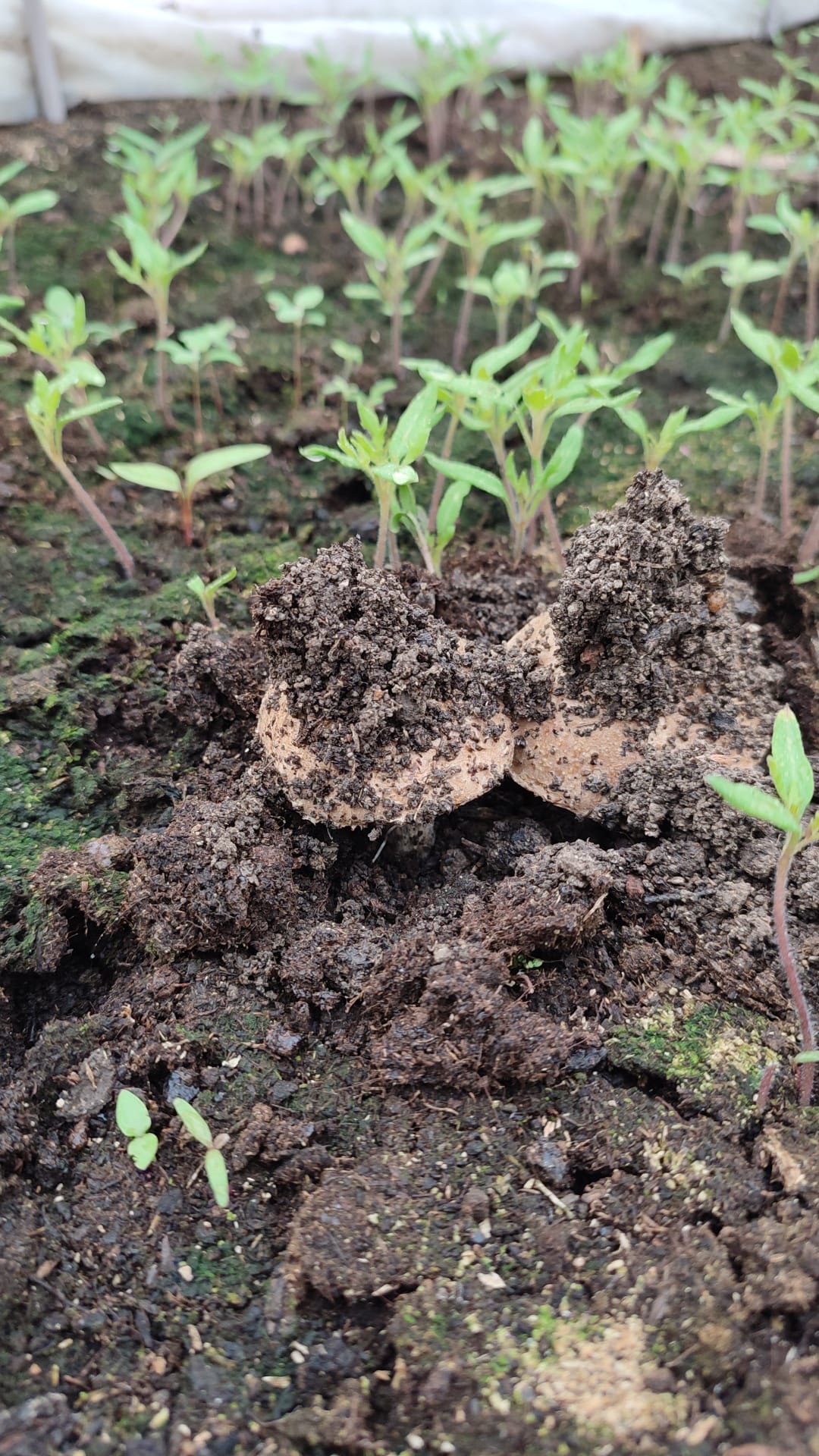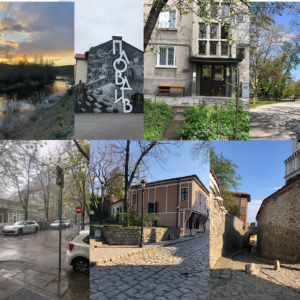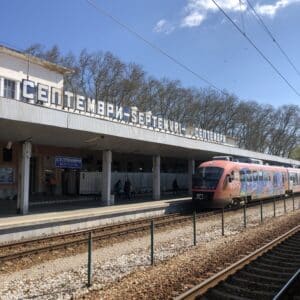François:
My beloved readers,
Because I haven’t written in the blog last week due to a series of unfortunate events including a week of vacation, I thought that I’d come back with a vibrant subject: seed scarification.
Many seeds possess a shell that protects them for exterior hazards, such as temperature or moist. But being so hard, they might also prevent or delay germination. Some natural processes, happening at the appropriate time of the year, help softening or breaking the shell, making the seed permeable to air and water, and thus sprouting. The process of scarification then refers to the artificialization of such processes. It becomes clear that scarification covers a wide variety of techniques, the main of which being explained below.
Mechanical scarification is the first one to come in mind, and consists of simply physically opening or altering the shell with a knife, sandpaper, a hammer, or any other similar tool.
Thermal scarification.
- Seeds of many trees, shrubs and perennials need cold stratification. What we want to replicate here is the fact that the seeds would stay in the ground along winter and thus be softened by frost and climatic hazards. To do so, we want to expose them to a cool (1°C to 3°C) and moist environment for one to three months. You can use sand or even wet paper towel as a medium and place it in the refrigerator in a sealed container. Some other seeds will need first a warm stratification before being exposed to cold. Then, you should expose them first to temperatures between 15°C and 20°C. Overall, it is also possible to simply planting the seeds in summer in a mulched bed for germination next (or second) spring), then letting nature do the job!
- Other thermal stratification techniques include soaking seeds in warm or even boiling water (this also removes pathogens!), or even smoke and fire! Some seeds indeed having adapted to thrill in environments exposed to wildfires.
Chemical scarification aims to replicate the process of animal digestion and defecation of some seeds. Such a process not only softens the shell thanks to the stomach acids, but also provide seeds with nutrients. It is then possible to soak the seeds in common household chemicals, such as sulfuric acid, sodium hydroxide, or potassium nitrate to reach a similar result. This technique is also commonly used by companies and universities to scarify a lot of seeds in a reduced time.
Don’t worry, most of the time the indications of what to do are given by the company you buy them from, or can be found easily on the internet. Be careful though, as you’ll need to sow the scarified seeds, that are not protected anymore, right away! I’m leaving you with a nice video by Gardener Scott summarizing this post.
May your seedlings never be leggy, and see you next week!
François
Anastasja and Peter:
Hello everyone!
This week we decided to write our blog post a bit earlier because it got really cold outside, and the weather is getting better on Thursday. Therefore, we’ll wait for the sunshine to come back, and do some indoor things in the meantime. So far, not much has happened this week. Among other things, we re-arranged and cleaned some rooms, made loads and loads of seedlings (flowers, herbs, and some veggies) which we had to move indoors, since it’s too cold for them right now in the greenhouse. But something IS growing in the greenhouse- some mushrooms in between the baby tomato plants (see cover picture).
Since we don’t have so much to tell so far, we thought to take you on a little journey back in time… to Buzovgrad! Do you remember? We already told you about our time there in Week 47, but we kept some stories for later.
One story was especially important to us. It is about Rada, our mentor Pol’s sister who inspired us with her love for gardening, and making all kinds of things herself from scratch, from food preserves, to soaps and sweaters. She and her family gave us an example for good practices in relation to self-sufficientl living, awareness of consumption, sustainable gardening and overall sustainable lifestyles.
But allow me to let Rada introduce herself and her vision:
R: I’m Rada. Rada Stoyanova is my name. Where to start? I lived in Spain for 12 years, and there I was working in very different fields. I’ve done graphic design, web design, audio-visuals also. In 2013 I decided to come back to Bulgaria, because of my roots and because I wanted to make something here in Bulgaria. To make something… how to explain… because in Spain, in Italy, in Western Europe, you have a lot of options, and you have a lot of things already done. But here there is less. You can see this in the streets and infrastructure… there’s a lot to do. So at some point I realized that I should do something for my country. (laughs). But I haven’t lived in Bulgaria for 12 years, so I needed to come back and get to know the people.
A: build a network
R: Build a network – and it’s not so easy. I studied Cultural Studies here in Bulgaria when I came back, and I was living 4 years in Sofia. Then I really wanted to contribute with organizing some contemporary cultural events in the province, outside of the big cities. I can say that that is one of my most important goals. To create something relating to the de-centralization of culture and cultural events because they are very concentrated in the big cities, and here in the province you have… nothing.
And then I have the garden, and I really love to be in the garden, and I really love to do some crafts. I was working for two years in a small ethnographic museum in Shipka, and there we were organizing mini-craft festivals. I’m learning about the garden, about the seeds, about the crafts. I’m learning to knit socks, I’m learning crochet, I’m learning tablet-weaving.
We were really impressed with all of the things Rada is doing herself, skills which many of us do not know, but which people back in the day were capable of, and which made them independent from markets and supply chains. Similar to Pol’s work in the community center, Rada is trying to bring back some of these skills to the village, and at the same time to inspire new perspectives in the local youth.
One of the things we wanted to know more about was the Stoyanova garden, and how the gardening techniques changed throughout the generations. It was great to hear that Rada and Pol introduced some permaculture techniques like mulching to retain moisture and protect against weeds, as well as drip-irrigation:
P: So you started maintaining the garden right after you came back from Spain?
R: This garden was always maintained. First, it was maintained by my grandmother and grandfather. And then my mother was trying to maintain the garden alone. Then I came back and I started to help her. And then Pol, my sister, came back and we started to implement some permaculture principles in the garden to make the garden easier for us. Because if not, it’s too much work for us every day. For example, we implemented a drip-irrigation system because, if not, in summer you have to water for one hour this part, and for one hour the other part… Last year we put straw
P: for mulching
R: Yes, we started mulching. This will be the second year. Always with the same goal: to make it easier. Easier and less time-consuming.
A: And how is that going?
R: It’s going well because this year, for example, we had tomatoes until November and we weren’t watering that much. There are not so many weeds growing, and the ground below the straw is very soft.
We were happy to hear that the permaculture techniques are helping the Stoyanovas with conserving more time and energy for all their other projects. Then Rada told us more about how her grandparents used to garden, and why in some ways she is not following their example:
R: My grandmother was doing traditional Bulgarian gardening and it means… to work all the time. (laughs). And we don’t want to do so. (laughs). My grandmother, she was working in the garden from 6 o’clock until 10, 11, and then in the evening when it’s fresh. And the traditional gardening in Bulgaria for me, is to have it all clean of weeds, and all very structured, and everything in its place. It’s not a wild garden. It has a lot of order in it, and you can never see any weeds. My grandmother was always picking the weeds and always working the ground. And watering into the channels, these lines
A: Watering with a garden hose?
R: Yes. And it takes a lot of time because you have to move it line by line. When one line is full you have to move it to another one. And meanwhile you are cooking and having guests… it’s a lot of work.
At the same time, Rada told us about how despite changing many things in the garden, she continues many of the things which she learned from her grandparents, like making preserves:
P: And with preserving food you learned most of it from your mother?
R: From my grandmother and my mother, yes. Because when I was a kid – here in Bulgaria it’s very typical – when you are a kid on Saturday and Sunday you go to your grandmother and grandfather in the village. Every Saturday and Sunday we were here in this house. And my grandmother was making us help them. And we were always helping to make compote, lutenitsa, things like that. So we learned as kids actually. Yeah. We were always helping to pick the weeds in the garden. So we actually know a lot of things from my grandmother and grandfather because as kids we were helping them in the garden.
Afterwards, on our way to the preserves room (the dispensa), Rada showed us her personal seed library. She has all kinds of seeds from her own garden, friends, and from people all around the area; from sugarcane (which used to be grown there, but is not so common anymore), many different salads, beans, flowers, tomatoes, and a lot more. We were baffled by the amount of seeds!
Now the dispensa:
There Rada and her family keep the vegetables which can stay over the winter, like potatoes, carrots, and onions, as well as many preserves. They have syrup from elderflower, roses, fig leaves, sour cherries, and cornelian cherries (a fruit we saw there for the first time, and it was very delicious), fig vinegar, rakia, and wine. They also preserve many fruits (prunes, cornelian cherries, peaches, figs, apples, cherries, blackberries, strawberries…) and vegetables (tomatoes, peppers, mushrooms, zucchini…) from the garden or that they foraged.
Rada shared with us that making preserves is very rewarding, but of course it also means that during the summer you are in the garden all day and on the weekends you make pots and pots of preserves. Besides preserving so much food, Rada also makes natural soaps with pig fat and essential oils. They also grow herbs like melissa, lemon thyme, saffron, as well as Samardala, Bulgarian honey garlic, one of our favorite features of Bulgarian cuisine.
We learned so much in such a short time from Rada and her family; we hope that her garden will get easier each year, and that others will come to share her joy of gardening and making things yourself.
Thank you, Rada!
PS: on our trip to Buzovgrad we also went to Turiya to see the Kukeri there. This is a tradition from Thracian times, where people dress up with masks and make a lot of noise to scare away evil spirits of the last year. Francois wrote about them in week 42. Here we made a short video, so you can get some impressions:
Talk to you soon,
Peter and Anastasja
Dani:
Dear Readers, This week I decided to travel a bit around Plovdiv and the region to visit my grandmother and meet with two very interesting people with a one-of-its-kind project in the Rodopi mountains, Varvara and her husband from Germany Christian. We met over lunch as they were about to leave on vacation and we could unfortunately not organize an event in their house in the mountains.
The two of them bought about 200 hectares of space in the Bulgarian village Kosovo in 2020 and decided to build their own private space using only natural materials with modern design. It was their plan to make it a sort of knowledge hub for building with natural materials and over the next twenty years they would successfully work on it. The old stone houses used by shepherds in past centuries were completely dilapidated and dead cats and dogs were found inside. Thus, the whole project was connected with enormous effort. Over the first 15 years, construction continued all over the house and volunteers and architecture students from all over Europe were regularly invited to help with the design and construction. In recent years, seminars have been held on an increasingly regular basis on a wide range of topics. Making soap, building with clay and other natural materials, etc. Initial attempts have also been made to integrate permaculture practices and it remains a major goal to do so. But with the children just reaching adolescent age, priorities are on other activities, including work.
I will be going there over the next week, when the weather is a bit better, to take photos and familiarise myself and all readers with the place.
Sadly the weather in Plovdiv was very bad so I couldn’t go out a lot, which left me stuck a bit, but I got to spend a lot of time with my grandmother. Thankfully I not one clear, sunny day.
Родопската теснолинейка – Narrow Gauge Train
I also took a little trip with the only narrow gauge train on the balkan peninsula. The old train goes through the Rodopi mountains and one beautiful view follows the next. Check out the videos:
Next week I will be going a lot around the country, visiting interesting places and taking pictures of everything..





